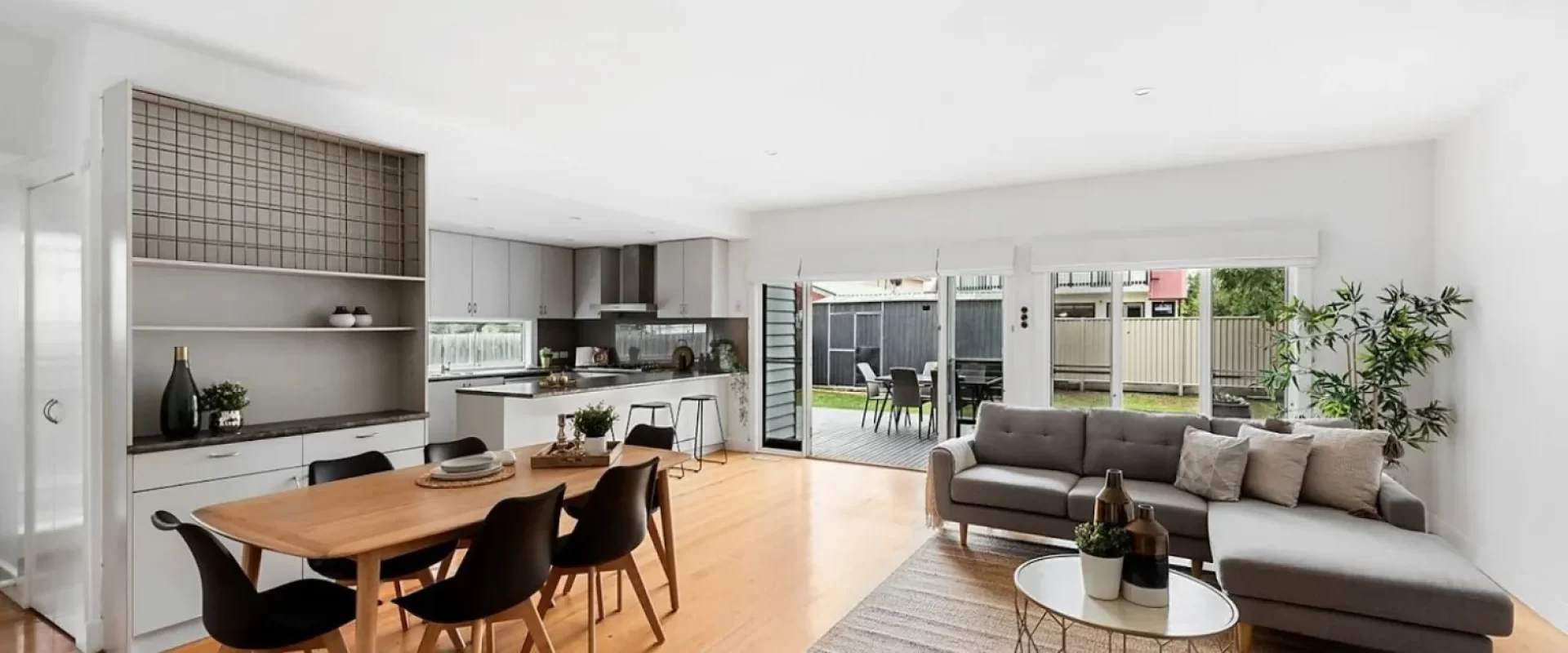Selling your home is a major life event, but how do you manage when you still have to live there? Staging a house while living in it presents unique challenges, from managing daily clutter to maintaining a show-ready appearance.
This guide provides practical, actionable steps to help you navigate this delicate balance. We’ll cover everything from mental preparation to professional staging, ensuring your home shines and attracts buyers, leading to a faster and more profitable sale.
Let’s transform your current living space into a buyer’s dream, without disrupting your daily life more than necessary.
Part 1- How to Stage Your Home for Sale While Living in it?
Steps to Staging a House while Living in it:
Step 1- Acknowledge the transition and focus on the next chapter.
Step 2- Utilize storage solutions to declutter and make rooms appear larger.
Step 3- Remove personal items to allow buyers to envision themselves in the space.
Step 4- Maintain a spotless home ready for showings at any time.
Step 5- Keep your home functional while maintaining a show-ready appearance.
Step 6- For maximum impact, hire a stager to showcase your home’s potential.
You want to create a space that appeals to potential buyers while maintaining a functional and comfortable living environment for yourself. This section provides a step-by-step guide to help you handle this challenge smoothly.
Step 1- Mentally Prepare for Transition

This first step is about mentally shifting from homeowner to seller. Detach emotionally from your home and start viewing it as a product you’re showcasing to potential buyers. Accept that you’ll be moving on, and this is a temporary living situation. This mental shift makes the staging process easier.
Actionable Steps:
- Visualize your move: Begin mentally preparing for life in a new space.
- Embrace decluttering: View it as a pre-move purge.
- Shift your mindset: Think of your home as a temporary space.
Advantages:
- Reduces emotional attachment, making it easier to let go.
- Creates a sense of purpose and motivation for the staging process.
- Eases the overall stress of moving.
This mental shift not only helps with staging but also ties into the broader concept of home styling strategically arranging and presenting a space to enhance its appeal.
Step 2- Maximize Space with Storage
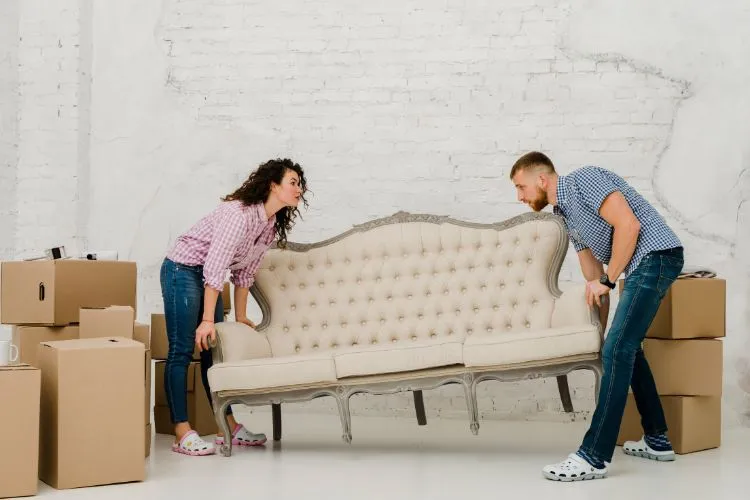
Rent a storage unit to declutter and create a sense of spaciousness. Relocate non-essential items to make your home appear larger and more appealing to buyers. This allows potential buyers to focus on the home’s features rather than being distracted by your personal belongings. It also protects your items from potential damage during showings.
Actionable Steps:
- Assess your belongings: Identify items to store.
- Choose the right size: Select a storage unit that fits your needs.
- Organize efficiently: Label boxes and create an inventory.
Advantages:
- Maximizes space within your home.
- Protects valuable items during showings.
- Reduces clutter and creates a clean look.
While decluttering and storage improve your home’s appeal, they can also add to your staging expenses. Understanding home staging costs can help you budget effectively and determine which investments offer the best return.
Step 3- Remove All Personal Items to Appeal to Buyers
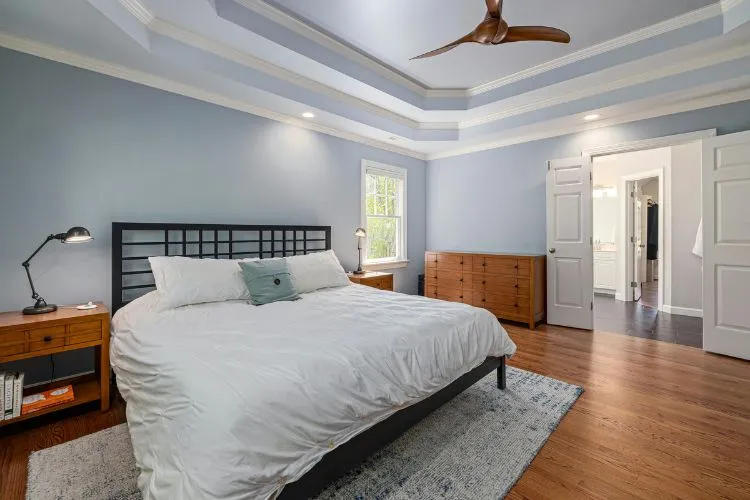
De-personalization is about creating a blank canvas that allows potential buyers to envision their own lives within the space. This involves removing items that are unique to your taste or hold strong emotional significance. These items can distract buyers from the home’s inherent features and prevent them from forming an emotional connection to the property.
Actionable Steps:
- Remove family photos and personal artwork.
- Pack away sentimental items and collections.
- Replace personalized decor with neutral pieces.
Advantages:
- Creates a neutral canvas for buyers.
- Reduces distractions and allows buyers to focus on the home’s features.
- Makes the home feel larger.
Failing to remove personal items is a common Home Staging mistake that can make it harder for buyers to see themselves in the space. Avoiding these staging missteps can help you create a more inviting and marketable home.
Step 4- Clean Your Home and Maintain a Show-Ready Look
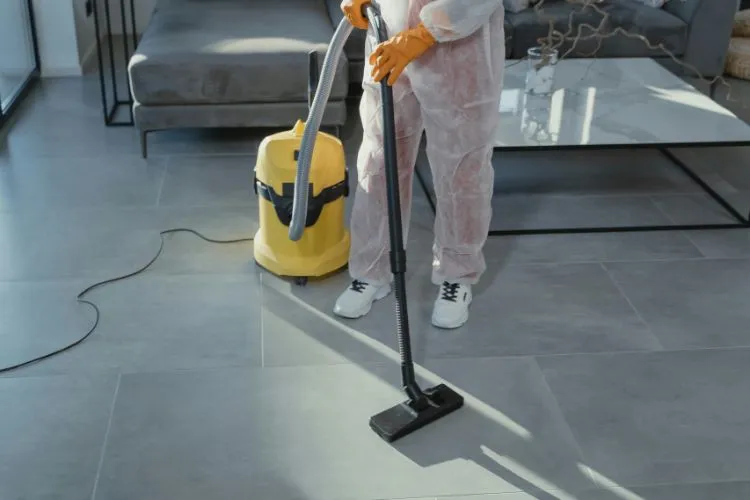
Cleanliness is paramount in home staging. A spotless home conveys a sense of care and maintenance, instilling confidence in potential buyers. This step involves more than just a quick surface cleaning; it requires a thorough and consistent cleaning routine. This level of cleanliness demonstrates that the home has been well-maintained, which is a significant selling point.
Actionable Steps:
- Create a daily cleaning schedule.
- Focus on high-traffic areas and visible surfaces.
- Consider professional cleaning services.
Advantages:
- Showcases the home’s cleanliness and maintenance.
- Creates a welcoming and inviting atmosphere.
- Helps to eliminate pet odors and other unpleasant smells.
A consistently clean home not only impresses buyers but also maximizes the benefits of staging by highlighting the property’s best features and making it feel move-in ready.
Step 5- Organize Smartly to Keep Daily Life Functional
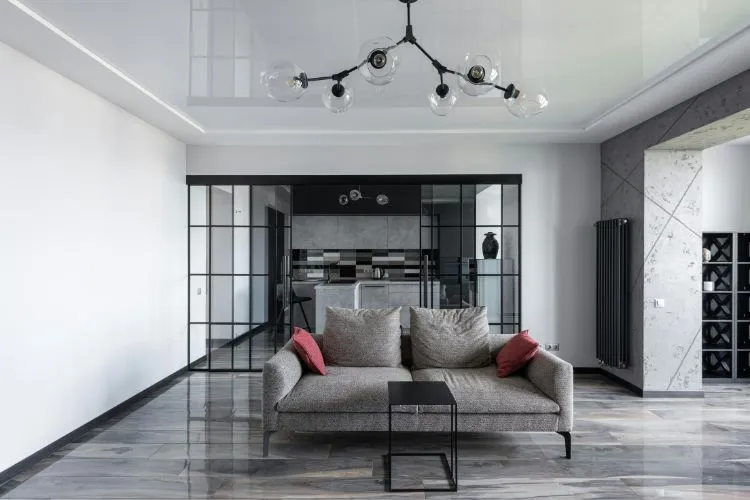
Organization is essential for maintaining a staged home’s appearance while living in it. It’s about establishing designated storage areas, utilizing storage solutions, and implementing daily tidying habits to ensure everything has its place.. This level of organization not only makes the home more presentable but also reduces the stress of living in a staged environment.
Actionable Steps:
- Establish designated storage areas.
- Use storage solutions like baskets and bins.
- Create a system for daily tidying.
Advantages:
- Reduces stress and saves time.
- Maintains a consistent, presentable appearance.
- Prevents last-minute scrambling before showings.
A well-organized home not only enhances the staging process but also plays a key role in selling your home faster by ensuring buyers see a space that feels effortless, inviting, and move-in ready.
Step 6- Hire a Professional Stager for Maximum Impact
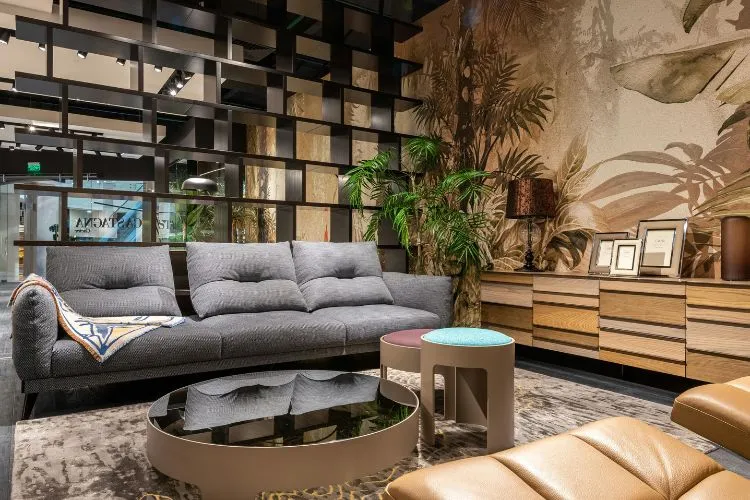
Professional property stylists bring expertise and resources to the staging process, transforming your home into a buyer’s dream. They can identify your home’s strengths and weaknesses and develop a staging plan that maximizes its potential. Hiring professionals saves you time and ensures a faster and more profitable sale by creating an irresistible environment.
Actionable Steps:
- Research and select a reputable staging company.
- Communicate your budget and preferences.
- Follow their recommendations for optimal results.
Advantages:
- Maximizes the home’s appeal and marketability.
- Saves time and effort.
- Increases the likelihood of a faster and more profitable sale.
staging while living in it presents unique challenges. With the right strategies, you can showcase your home’s best features while maintaining a functional living space. Here’s how to stage your home for sale effectively and maximize its value.
Selling Your Melbourne Home? Let Us Help You Make a Lasting Impression
Decor 2 Sell specializes in transforming Melbourne homes into irresistible properties that capture buyers’ attention and drive faster, more profitable sales. Our expert team understands the Melbourne market and knows how to showcase your home’s unique features to its full potential. We handle everything from furniture selection and placement to decor and styling, creating an inviting and aspirational atmosphere that resonates with potential buyers.
Why Choose Decor 2 Sell?
- Local Expertise: We understand the nuances of the Melbourne real estate market and tailor our staging strategies accordingly.
- Comprehensive Services: From initial consultation to complete home staging, we offer a full range of services to meet your needs and budget.
- Proven Results: We have a track record of helping Melbourne homeowners achieve faster sales and higher prices.
- Personalized Approach: We work closely with you to understand your goals and create a staging plan that aligns with your vision.
Contact Decor 2 Sell today for a free consultation and discover how we can help you sell your Melbourne home faster and for more!
Part 2- Minimalist vs. Cozy: Which Staging Approach Sells Better?
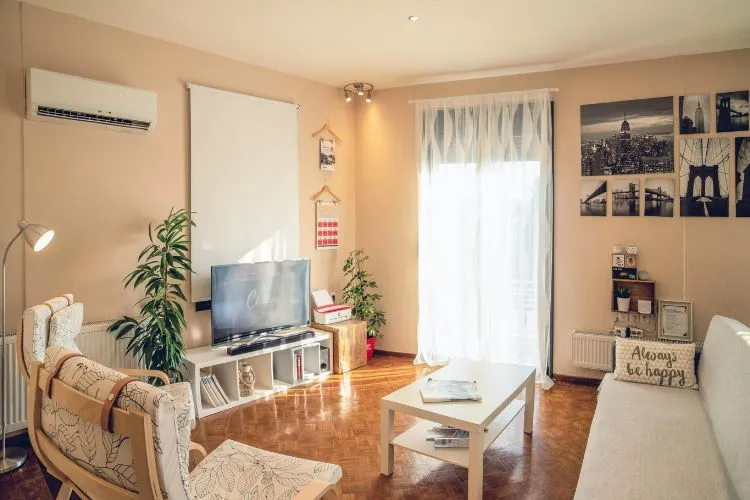
When staging a home for sale, two popular approaches dominate the market: minimalist and cozy. Both can catch a buyer’s eye, but which one is better depends on things like who you’re trying to sell to, where the house is, and what kind of place it is. Let’s break down the pros and cons of each to determine which approach works best for home staging.
| Staging Approach | Pros | Cons & Best For |
| Minimalist Staging | – Emphasizes space and clean lines.- Makes smaller rooms appear larger.- Highlights architectural details.- Appeals to buyers looking for a blank canvas. | – Can feel sterile or impersonal if not done carefully.- May not work well in homes lacking architectural interest.Best for: Modern homes, smaller spaces, upscale urban properties. |
| Cozy Staging | – Creates a warm and inviting atmosphere.- Helps buyers feel comfortable and at home.- Showcases a room’s potential and evokes emotions.- Works well for various home styles. | – Can make small rooms feel cramped if overdone.- Might not appeal to buyers preferring a minimalist look.Best for: Family homes, suburban properties, traditional or vintage-style homes. |
| Hybrid Approach | – Balances spaciousness with warmth.- Uses decluttering (minimalist) with soft textiles, plants, and artwork (cozy).- Appeals to a wider range of buyers. | – Requires careful execution to avoid clashing styles.Best for: Homes needing broad market appeal, mixed-style properties, and listings targeting various buyer preferences. |
The right staging approach can significantly influence a buyer’s perception and decision-making process, ultimately impacting the sales outcome and the property’s final selling price.
Part 3- Virtual vs. Physical Staging: Which Works Best for Selling Your Home?

In today’s digital age, sellers have two primary options for staging their homes: virtual and physical. Both offer unique advantages and disadvantages, and the best choice depends on your budget, timeline, and the current market conditions.
Physical Staging:
- What it is: Involves furnishing and decorating the actual property with real furniture, decor, and accessories.
- Pros: Allows buyers to experience the space firsthand, creating an emotional connection. Showcases the scale and flow of rooms accurately. Can significantly increase perceived value and buyer interest.
- Cons: More expensive than virtual staging. Requires time and effort to coordinate furniture rental, delivery, and setup. May not be feasible for vacant properties or those in remote locations.
Virtual Staging:
- What it is: Uses digital software to add furniture and decor to photos of empty rooms.
- Pros: More affordable than physical staging. Allows buyers to visualize the potential of a vacant space. Convenient and quick to implement. Offers flexibility to experiment with different styles.
- Cons: Doesn’t provide the same immersive experience as physical staging. Buyers may not get an accurate sense of scale and flow. Relies on high-quality photos for effective presentation.
Which Option Works Best?
The best staging approach depends on factors like budget, property type, and selling strategy:
- Virtual staging is ideal for vacant homes, budget-conscious sellers, and online-focused marketing.
- Physical staging works best for occupied homes, high-end properties, and markets where in-person showings are crucial.
- Hybrid Approach: Some sellers use virtual staging for listing photos and add minimal physical staging (like fresh flowers or accessories) for showings.
Pro Tip:
If opting for virtual staging, ensure the images reflect the real potential of the home. Misleading photos can lead to disappointment during in-person visits, reducing buyer trust.
Understanding the value of home staging—whether virtual or physical—helps sellers determine if the investment is truly worthwhile in attracting buyers and securing the best possible sale
Part 4- What to Avoid When Staging While Living in the Home?

Staging a home while still living in it presents unique challenges. It’s a balancing act between maintaining a functional living space and creating a show-ready property. Here’s what to avoid to ensure your home appeals to buyers without disrupting your daily life too much:
| Mistake | Solution |
| Clutter Overload | Declutter ruthlessly! |
| Over-Personalization | Depersonalize; remove personal items. |
| Neglecting Repairs | Address all repairs before listing. |
| Poor Lighting | Maximize natural light; add lighting fixtures. |
| Ignoring Odors | Clean thoroughly; air out regularly. |
| Disregarding Curb Appeal | Maintain landscaping; ensure welcoming entryway. |
| Inconsistent Styling | Create a cohesive design throughout. |
| Forgetting About Storage | Organize closets and cabinets neatly. |
| Disruptive Showings | Minimize impact; maintain cleanliness. |
| Not Seeking Professional Advice | Consult a professional stager. |
Staging while living in your home requires careful planning and effort. By avoiding these common pitfalls, you can create a space that appeals to buyers while still maintaining a comfortable living environment for yourself.
Many myths about home staging can lead to mistakes. Knowing the truth helps you stage your home the right way and sell it successfully.
Part 5- What Are Your Home’s Key Selling Points?
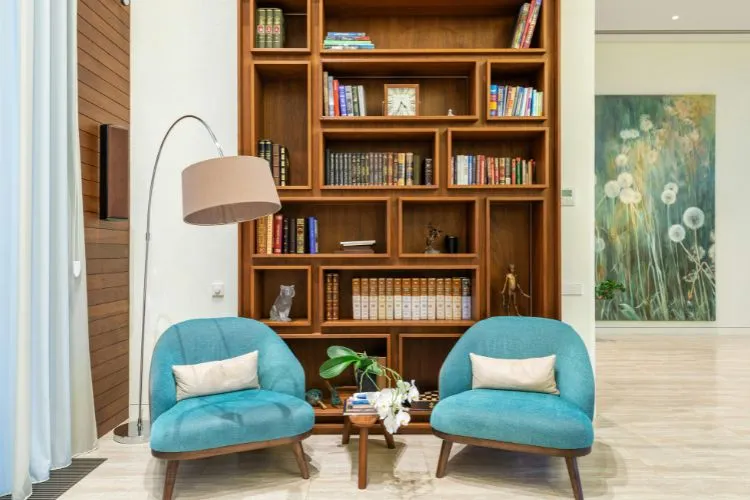
Before you even start staging, it’s crucial to identify your home’s key selling points. These are the features and characteristics that make your property stand out from the competition and appeal to potential buyers. Understanding your home’s strengths allows you to focus your staging efforts and highlight what makes it special.
How to Identify Your Home’s Key Selling Points:
- Consider the Location: Is your home in a desirable neighborhood? Does it offer easy access to amenities, schools, parks, or transportation? Proximity to these features is a major selling point.
- Highlight Unique Features: Does your home have a gourmet kitchen, a spacious backyard, a stunning view, a cozy fireplace, or a finished basement? These unique features are often what attract buyers.
- Think About the Layout and Flow: Does your home have an open floor plan, a master suite, or ample storage space? A well-designed layout can be a significant selling point.
- Assess the Condition of Your Home: Are your appliances new? Have you recently made any upgrades or renovations? A well-maintained and updated home is highly desirable.
- Consider Your Target Buyer: Who are you trying to attract? Families with children might prioritize a large backyard and good schools, while young professionals might value a modern kitchen and easy access to city amenities.
- Look at Comparable Properties: Research what features are popular in homes similar to yours in your area. This can help you identify what buyers are looking for.
- Get a Professional Opinion: A real estate agent or professional stager can offer valuable insights into your home’s strengths and weaknesses.
Highlighting your home’s key selling points is essential, especially in spaces like the living room. Staging it properly can make a strong first impression and attract buyers.
How to Showcase Your Home’s Key Selling Points:
- Staging: Use staging to draw attention to your home’s best features. For example, if you have a beautiful fireplace, arrange furniture to highlight it.
- Photography: Professional photos can capture your home’s key selling points and showcase them to potential buyers online.
- Marketing Materials: Highlight your home’s best features in your listing description and marketing materials.
- Open Houses: Point out your home’s key selling points to buyers during open houses.
By identifying and showcasing your home’s key selling points, you can attract more buyers and increase the likelihood of a successful sale.
Conclusion:
Staging your home for sale, whether you’re living in it or not, is a multifaceted process. By understanding the key elements discussed in this guide, you can create a space that appeals to a wide range of buyers and maximizes your chances of a successful sale.
If you’re feeling overwhelmed or unsure where to start, remember that professional help is available. Decor 2 Sell specializes in transforming Melbourne homes into buyer magnets.
Frequently Asked Questions
How do I stage my home with kids and pets?
Staging with kids and pets requires extra planning and effort. For kids, declutter their rooms, organize toys, and pack away non-essential items. For pets, thoroughly clean to remove hair and odors, keep them out of the house during showings, and remove pet bowls and toys.
Consider a professional cleaning service. The goal is to minimize signs of kids and pets while maintaining a warm, inviting atmosphere.
Is it worth hiring a professional home stager?
Yes, in many cases. Professional stagers bring expertise, resources, and an objective perspective. They can identify your home’s strengths and weaknesses, create a targeted staging plan, and often have access to furniture and décor.
While there’s a cost involved, professional staging can lead to faster sales and higher offers, making it a worthwhile investment for many sellers.
Can I stage my home on a budget?
Absolutely! Focus on DIY solutions like decluttering, deep cleaning, and rearranging existing furniture. Borrow or rent décor items instead of buying new ones. Prioritize key areas like the living room and master bedroom.
Even small changes can make a big difference. Online resources and DIY tutorials can be very helpful.
How do I handle personal items and valuables during home showings?
Remove all personal photos, sensitive documents, religious items, and valuable possessions. Store them securely off-site or in a locked safe.
The goal is to depersonalize the space so buyers can envision themselves living there and protect your valuables.

